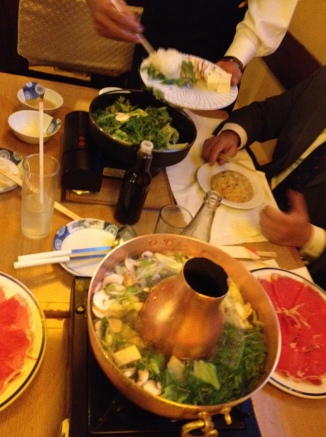Archivos Mensuales: noviembre 2011
One fundamental root cause of problems is to let profitability outweigh passion – HBR
In the lead up to today’s release of the Steve Jobs biography, there’s been an increasing stream of news surrounding its subject. As a business researcher, I was particularly interested in this recent article that referenced from his biography a list of Jobs’s favorite books. There’s one business book on this list, and it «deeply influenced» Jobs. That book is The Innovator’s Dilemma by HBS Professor Clay Christensen.
But what’s most interesting to me isn’t that The Innovator’s Dilemma was on that list. It’s that Jobs solved the conundrum.
When describing his period of exile from Apple — when John Sculley took over — Steve Jobs described one fundamental root cause of Apple’s problems. That was to let profitability outweigh passion: «My passion has been to build an enduring company where people were motivated to make great products. The products, not the profits, were the motivation. Sculley flipped these priorities to where the goal was to make money. It’s a subtle difference, but it ends up meaning everything.»
Anyone familiar with Professor Christensen’s work will quickly recognize the same causal mechanism at the heart of the Innovator’s Dilemma: the pursuit of profit. The best professional managers — doing all the right things and following all the best advice — lead their companies all the way to the top of their markets in that pursuit… only to fall straight off the edge of a cliff after getting there.
Which is exactly what had happened to Apple. A string of professional managers had led the company straight off the edge of that cliff. The fall had almost killed the company. It had 90 days working capital on hand when he took over — in other words, Apple was only three months away from bankruptcy.
When he returned, Jobs completely upended the company. There were thousands of layoffs. Scores of products were killed stone dead. He knew the company had to make money to stay alive, but he transitioned the focus of Apple away from profits. Profit was viewed as necessary, but not sufficient, to justify everything Apple did. That attitude resulted in a company that looks entirely different to almost any other modern Fortune 500 company. One striking example: there’s only one person Apple with responsibility for a profit and loss. The CFO. It’s almost the opposite of what is taught in business school. An executive who worked at both Apple and Microsoft described the differences this way: «Microsoft tries to find pockets of unrealized revenue and then figures out what to make. Apple is just the opposite: It thinks of great products, then sells them. Prototypes and demos always come before spreadsheets.»
Similarly, Apple talks a lot about its great people. But make no mistake — they are there only in service of the mission. A headhunter describes it thus: «It is a happy place in that it has true believers. People join and stay because they believe in the mission of the company.» It didn’t matter how great you were, if you couldn’t deliver to that mission — you were out. Jobs’s famous meltdowns upon his return were symptomatic of this. They might have become less frequent in recent years, but if a team couldn’t deliver a great product, they got the treatment. The exec in charge of MobileMe was replaced on the spot, in front of his entire team, after a botched launch. A former Apple product manager described Apple’s attitude like this: «You have the privilege of working for the company that’s making the coolest products in the world. Shut up and do your job, and you might get to stay.»
Everything — the business, the people — are subservient to the mission: building great products. And rather than listening to, or asking their customers what they wanted; Apple would solve problems customers didn’t know they had with products they didn’t even realize they wanted.
By taking this approach, Apple bent all the rules of disruption. To disrupt yourself, for example, Professor Christensen’s research would typically prescribe setting up a separate company that eventually goes on to defeat the parent. It’s incredibly hard to do this successfully; Dayton Dry Goods pulled it off with Target. IBM managed to do it with the transition from mainframes to PCs, by firewalling the businesses in entirely different geographies. Either way, the number of companies that have successfully managed to do it is a very, very short list. And yet Apple’s doing it to itself right now with the utmost of ease. Here’s new CEO Tim Cook, on the iPad disrupting the Mac business: «Yes, I think there is some cannibalization… the iPad team works on making their product the best. Same with the Mac team.» It’s almost unheard of to be able to manage disruption like this.
They can do it because Apple hasn’t optimized its organization to maximize profit. Instead, it has made the creation of value for customers its priority. When you do this, the fear of cannibalization or disruption of one’s self just melts away. In fact, when your mission is based around creating customer value, around creating great products, cannibalization and disruption aren’t «bad things» to be avoided. They’re things you actually strive for — because they let you improve the outcome for your customer.
When I first learned about the theory of disruption, what amazed me was its predictive power; you could look into the future with impressive clarity. And yet, there was a consistent anomaly. That one dark spot on Professor Christensen’s prescience was always his predictions on Apple. I had the opportunity to talk about it with him subsequently, and I remember him telling me: «There’s just something different about those guys. They’re freaks.» Well, he was right. With the release of Jobs’s biography, we now know for sure why. Jobs was profoundly influenced by the Innovator’s Dilemma — he saw the company he created almost die from it. When he returned to Apple, Jobs was determined to solve it. And he did. That «subtle difference» — of flipping the priorities away from profit and back to great products — took Apple from three months away from bankruptcy, to one of the most valuable and influential companies in the world.
#VamosAzul
Untitled
Av. Juárez
Any difference…?
Station: The Looking Glass
11/11/11 11:11:11
Restaurante Mikado #delicioso
Vista desde la oficina
El Ángel
La Diana
«I’m always fighting for you» #DILBERT
3-0
2-0
Mosaico Azul
Ciudad
Ways to bring yourself back from burnout
http://www.cnn.com/2011/11/01/living/oprah-burnout/index.html
Research burnout on the Internet, and you’ll find a trove of helpful hints like «Learn to manage stress!» and «Live life in balance!» This is like hearing a financial manager tell you, «Have several million dollars!» In contrast, authors like Hanley offer wonderfully detailed instructions. Of course, when you’re burned out it’s hard to read a shampoo bottle, let alone a book. The following abridged advice may help cool the burn.
Chill Principle 1: Become a grazer.
Since burnout often includes weight gain, many people try to eat less as stress levels climb. Yet going hungry can itself be very stressful. And feeding a body infrequently creates the alarm state that encourages fat storage. The solution: Eat more. I don’t mean doughnuts and lattes, though. I mean low-calorie green food that you eat throughout the entire day. Adding food with lots of antioxidants, water, fiber, and other nutrients can calm you and help your body relax. (I favor smoothies made from fruit and leafy veggies — tastier than they sound.) In addition, take daily omega-3 supplements such as fish oil. These healthy substances reduce inflammation, the physiological part of the «flame» that’s burning you out.
Oprah.com: The Joy diet
Chill Principle 2: Sleep as if your life depends on it.
Some people feel superior when they work around the clock. This is like proudly pouring Tabasco sauce in your eyes. Sleep makes you smarter, better-looking, more creative. It can add years to your life. It does more to improve the long-term quality of that life than money, fancy vacations, or hot sex. Not giving high priority to sleep is, frankly, insane.
Because our culture doesn’t teach this, many people feel they don’t have time to sleep. There are certainly days, even weeks, when this is true. But when sleep deprivation drags into months or years, we’re making choices that sustain it. Because I’ve been all the way to burnout, I’ve become vigilant about getting enough sleep — and I started when I was unemployed and in debt. Exert every ounce of your will and ingenuity to do the same. Hire someone to help with the kids, even if it means living in a smaller house. Refuse to work for bosses who expect frequent all-nighters. Don’t take on tasks that disallow sleep, any more than you’d say yes to a job that deprives you of oxygen.
For «driven» patients, Hanley suggests six to eight hours of sleep each night, with naps as needed. For «dragging» patients: eight hours a night, with one period of relaxation during the day (sitting somewhere quiet, even in a restroom stall, for ten to 15 minutes). If you’re «losing it,» you need eight hours of sleep plus two ten- to 15-minute relaxation breaks. «Hitting the wall» means eight to nine hours each night, plus two breaks. And once you’re «burned out,» you need eight to ten hours of sleep, plus three 15- to 30-minute naps or retreats. Ignore these minimums, and your body will eventually end up lying still anyway — in your bed, a hospital, or the morgue. You choose.
Oprah.com: 5 ways to calm the jitters
Chill Principle 3: Exercise for fun.
Almost no one ever tells you to exercise less, but if you’re burned out, you should. I fried myself into chronic pain by forcing workouts when my whole body wanted to rest. Ironically, when I began exercising less, I got leaner and fitter. Some exercise helps prevent burnout, but too much, at the wrong time, only turns up the heat.
If you’re «driven,» aim for an hour of vigorous exercise three to five times per week. «Dragging» folks should limit hard exercise to one hour three times a week, or one to three sessions of moderate activity like light yoga. If you’re «losing it,» do three gentle hours a week. «Hitting the wall» calls for 30 gentle minutes one to three times a week. If you’re totally «burned out,» roll over in bed occasionally until you’re stronger.
Oprah.com: 5 ways to remix your same old workout
The key to gauging how much you should exercise is a mysterious thing called fun, which you may remember from childhood. While exercising, ask yourself, Is this fun? If running isn’t fun, walk. If walking isn’t fun, sit. If even that feels wearisome, take a nap. Your body-mind fun barometer is sophisticated and accurate. Use it.
Chill Principle 4: Unplug heaters, plug in coolers.
Make a list of all the people with whom you regularly interact. Next, list environments you inhabit — your office, your car, rooms in your home. Finally, list your usual activities, from relaxation (ha-ha! just kidding!) to laundry to office meetings. Now imagine each item separately while noticing how your body reacts. Tension, jaw-clenching, or churning are signs you’re plugged into a heater. Muscle relaxation, spontaneous smiles, sighs of relief show you’re chilling.
You may not be able to eliminate the «heaters» from your life, but you can — and must — unplug from them every few hours and plug into «coolers» instead. Detach from your sick child, even for a few minutes, to call a healthy friend. Stop doing paperwork and read a novel for 20 minutes. Leave all technology and reconnect with nature — petting puppies, walking in the park — whenever possible.
Oprah.com: You and improved: 30 simple ways to upgrade your life
Chill Principle 5: Practice peace.
I love watching TV cooking contests where grown adults go into full-scale hysterics over things like overboiled pasta. Since I’m not a foodie, I find it hilarious when people sacrifice their peace of mind to the Cuisine Gods. On the other hand, when my computer recently contracted a virus, sending early drafts of work instead of the final draft, my head nearly exploded like a popcorn kernel.
The fact is, all of us can eat soft pasta, correct computer errors, even fight an illness — in panic or in peace. But choosing peace doesn’t just happen; it’s a skill that takes regular practice to master. Choose and use such a practice, whether it’s prayer or simply clearing your mind. Though you may never reach Yoda-level equanimity, devoting even five minutes a day to telling yourself I am all right in this moment builds increasingly effective air-conditioning into your body and mind.













